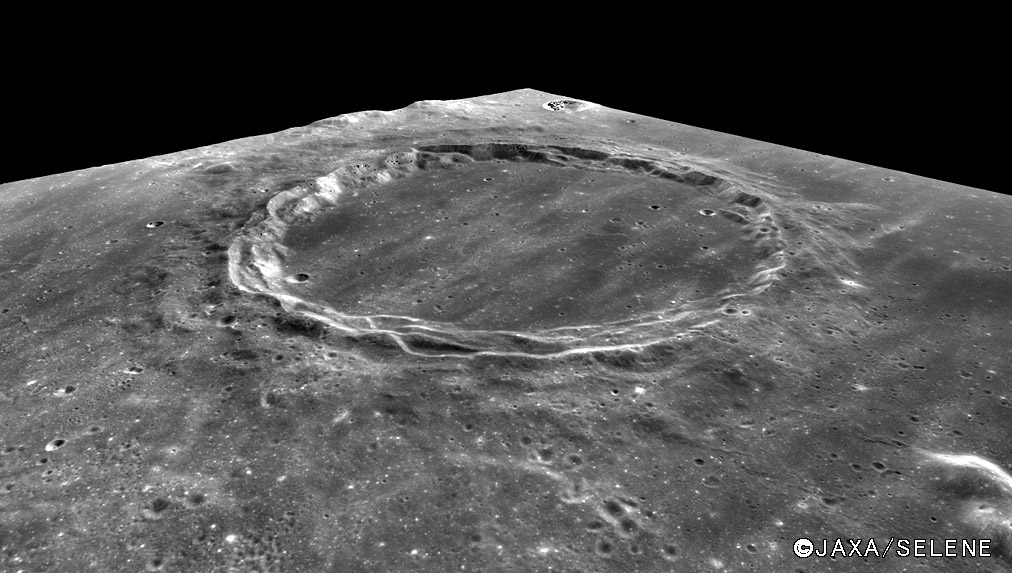January 29, 2019
Elevated Drapery
Originally published November 20, 2009

south looking view from Kaguya Image Gallery
Impact craters are holes in the ground, cut into the existing terrain and surrounded by an elevated rim of ejecta. This crater, Archimedes, seen in this high oblique topographic image, only meets one of those two criteria. As is quite clear on the opposite side of the crater, the floor of Archimedes is higher than the surrounding mare. This elevated floor must be mare lava that rose up fractures and flooded Archimedes' floor from below. This would have been an amazing sight, as cracks appeared on the original deep floor, followed by incandescent lavas oozing out and spreading to veneer the floor. The depth of lava increased over time, submerging the central peak and the lower wall terraces and slump mounds. If the lava had been fed from the same source as Mare Imbrium it presumably would have risen to the same level. The floor lava does have the same spectral characteristics as the mare immediately to it's west, but it must have been fed from a deeper source to have risen higher. The broad swaths of brightness crossing the floor are broad rays from Copernicus, which impacted probably 3 billion years after the crater floor flooding. What a long time to wait for the next event.
Chuck Wood
Technical Details
Stereo images from the Kaguya Terrain Camera were used by Japanese scientists to construct a x,y,z topographic data file and an image was draped over it.
Related Links
Rükl plate 22
Yesterday's LPOD: 40 Years Ago Today
Tomorrow's LPOD: Kaguya Moon
COMMENTS?
Register, Log in, and join in the comments.



